There’s some major change happening over at the watches division of French luxury maison Louis Vuitton. In particular, with its emblematic Tambour timepiece, but it’s not just about product. The evolution, it seems, goes further into direction and approach. But first, a bit of context. Like a lot of fashion brands that entered the fine and eventually high watchmaking segments in the last few decades, Vuitton has had a lot of proving to do.
The brand’s watch collections have come to be defined by a visual boldness, and a gung-ho spirit of creativity that taps on the house’s codes of travel and adventure. That spirit has spawned fancy flights of creativity such as its high watchmaking automata creations – the face of Einstein, a skull with a snake crawling out of an eye socket, a Chinese opera bian lian face-changer mask.
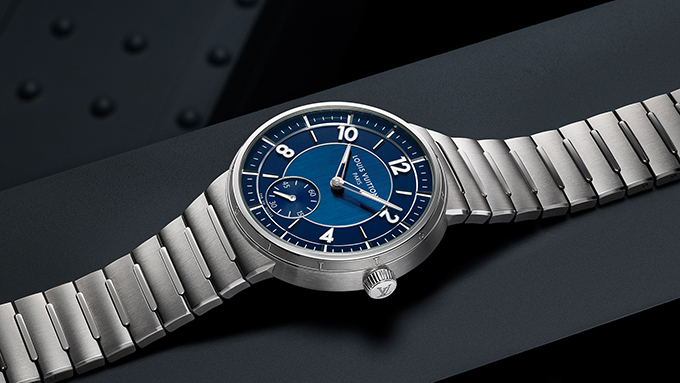
But for the most part, Vuitton’s mainstay and signature timepiece has been the Tambour. First introduced in 2002, it takes its name from its drum-shaped case, engraved on the outside with ‘Louis Vuitton’—serendipitously 12 letters-long, and placed on the hour positions. With the Tambour, the house went on a spree of designs and interpretations: monogrammed fashion styles, diamond-set jewellery styles, divers, chronographs, complications like tourbillons, the beguiling Spin Time Air, and of course the automata.
But that’s squarely in the past, because the maison is revamping its entire watches division. Something like 80 percent of the lineup is being discontinued. But in its place comes something truly exciting: a new, core Tambour—very much in the style of ever popular steel sports watches—which is taking Vuitton’s offering strictly upmarket.


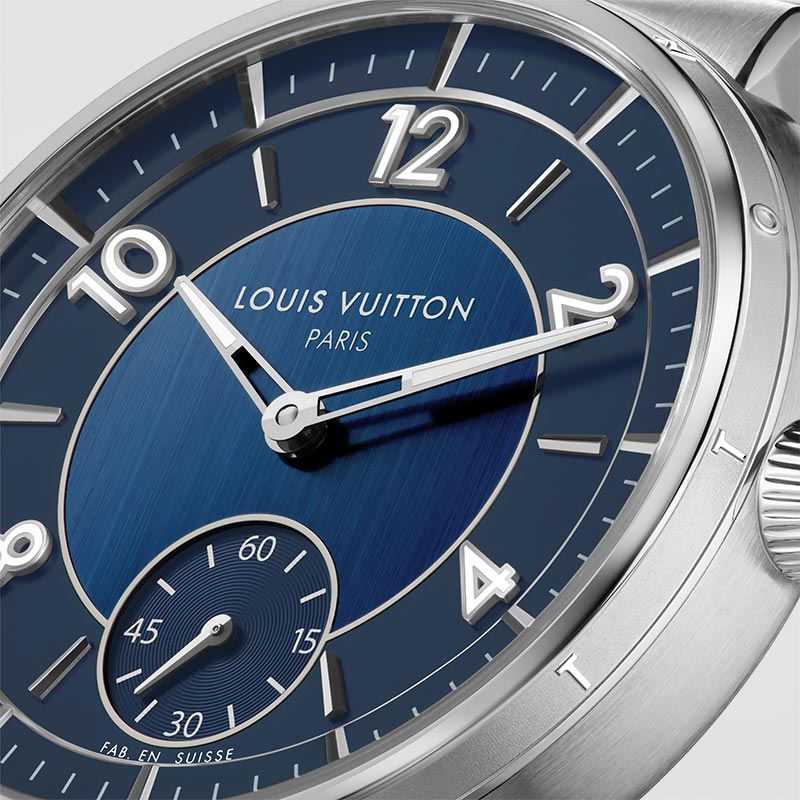
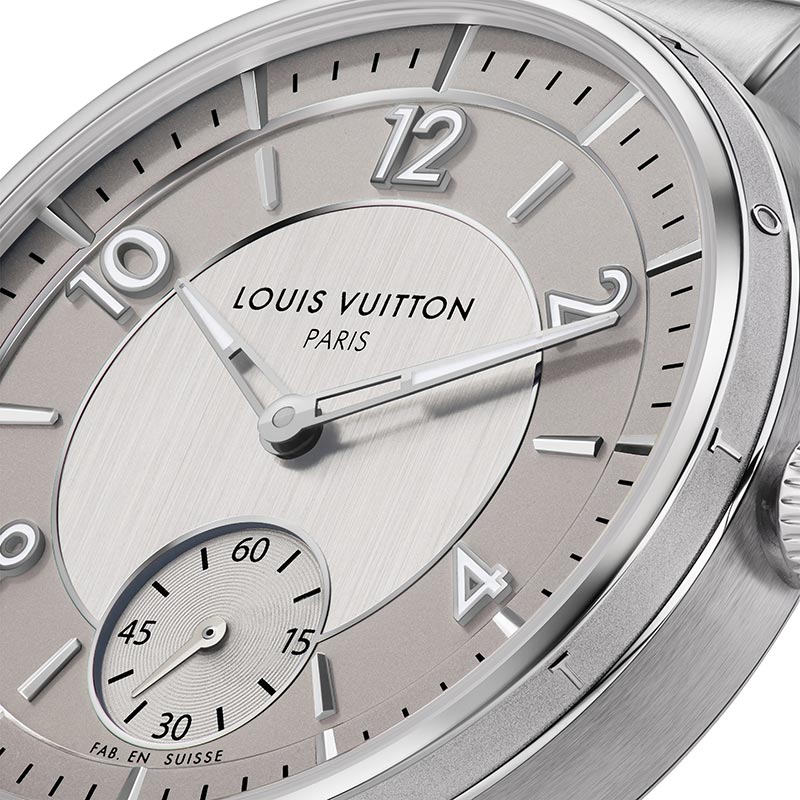
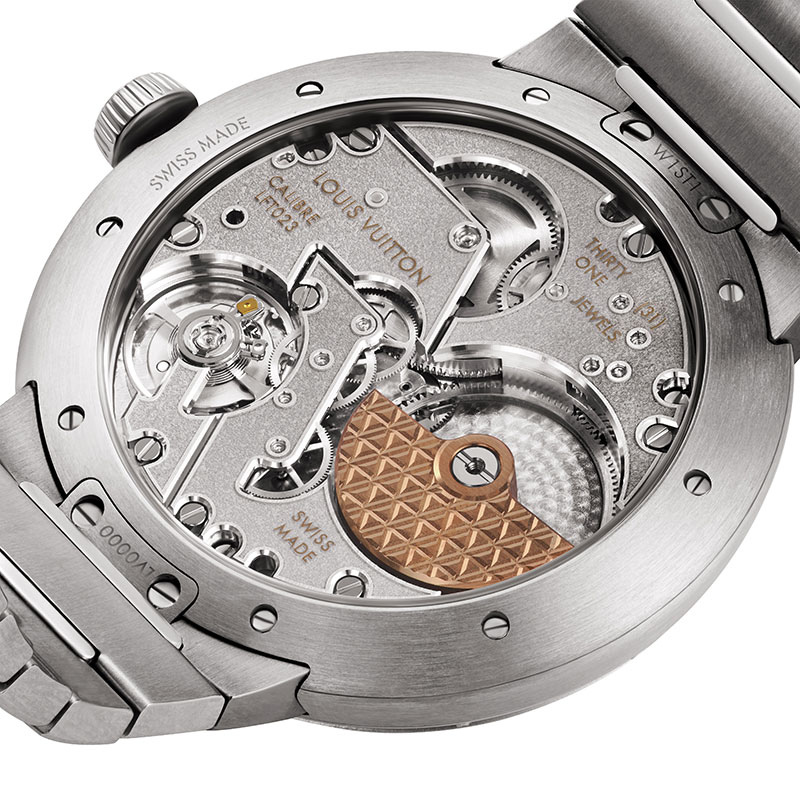

The design of the new Tambour is still recognisable, but think of it as a coming of age—after all, the Tambour does actually turn 21 this year. It’s now got a slimmer form; more sophisticated finishes; and a brand spanking new movement from La Fabrique du Temps, Vuitton’s watchmaking atelier in Geneva. The latter is named the LFT023, the first automatic three-hand movement developed in-house by Louis Vuitton, with a 50 hour power reserve.
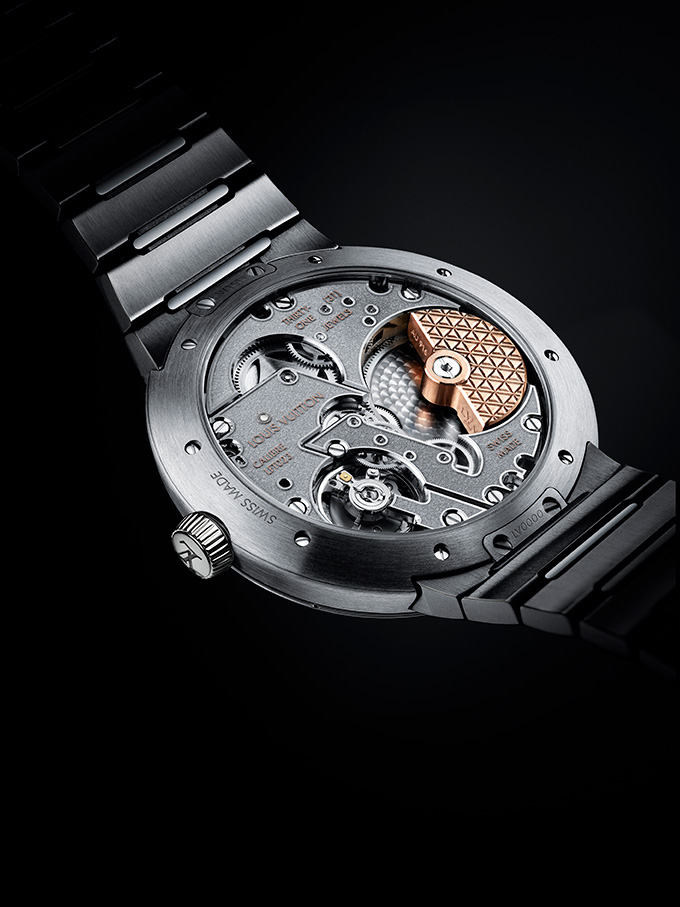
These new Tambours are designed as everyday sports watches, and have launched with two full steel versions; one with a tonal silver dial, and the other with a deep blue dial, both priced at $27,100. There are also versions in mixed steel-gold and solid gold slated for later launch.
But you’ll notice right away that the finishes and details of the new Tambours are more refined and elevated than before: a mix of polished, satin and sandblasted finishes, as well as chamfered edges across the case, bezel, integrated bracelet, links and crown. The new level of detail also extends to the Louis Vuitton letters on the bezel. Instead of simple engraving, they are now precisely sculpted and raised, each tiny letter polished. Little things, to be sure, but they make these watches look and feel, pretty much instantly, like a step up from its predecessors.

There’s just as much care and variation in the dial design. At just over a millimetre thick, the Louis Vuitton Tambour still manages to feature a range of depth and dimension. There’s two split-level chapter rings, an outer minuterie and inner hour ring separated by a polished step. There’s something rather neat with the indices too: the recessed five-minute markers on the outer ring look like negatives of the applied tapered baton indices on the hour track. The rest of the dial is a neat accumulation of detail. Diamond-polished white gold indices, hands and numerals; micro-sandblasted and brushed dial textures; a snailed seconds counter; and Super-LumiNova on the applied numerals and openwork hands.

It all adds up to a dial design that’s got lasting appeal: attractively modern, legible and light on the eyes. A lot of the new Tambour’s changes may perhaps be chalked up to the appointment of Jean Arnault, the youngest scion of the LVMH empire, as marketing and development director of watches at Louis Vuitton. The 25-year-old Arnault is a known watch aficionado, and you’ll find his collector’s eye on the subtle things like the curve of the Tambour’s caseback and bracelet links, which help it sit comfortably on the wrist. And even at a 40mm case size, the refined proportions and thinness of this Tambour means that it has a slimmer, more elegant profile than before.
What’s most beguiling about watches from Louis Vuitton, however, is seeing how a French luxury house founded as a maker of travel trunks applies its heritage to the craft of watchmaking. There’s two interesting tidbits. The first is a sweet piece of narrative: rather than stamp its quality credentials with the traditional ‘Swiss Made’, Vuitton has opted for the French ‘Fab. En Suisse’. It’s meant to allude to dials from the 1950s and ‘60s, and the unabbreviated ‘Fabriqué’ is a nod to La Fabrique du Temps where the watch itself is made.
The second (which is, strictly speaking, meant to be a surprise for clients who’ve placed an order) is that every one of these new Tambour watches will be delivered in a Louis Vuitton watch trunk. Imagine that, a house built on voyages and adventure sending your watch on its way from Switzerland to you, travelling comfortably in its own trunk.





